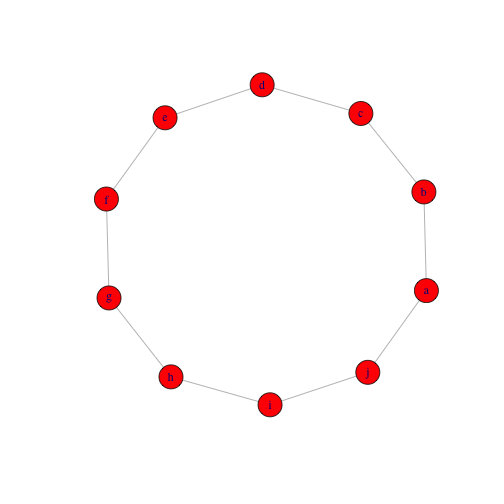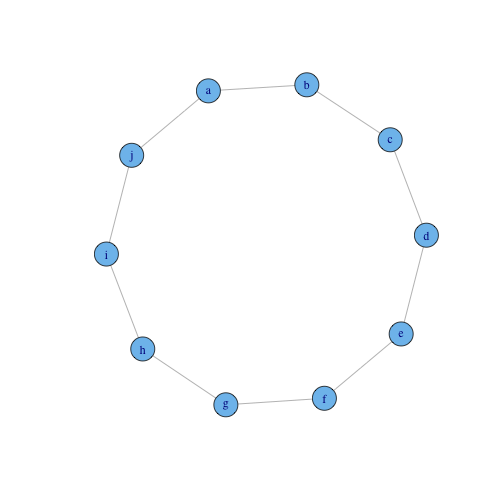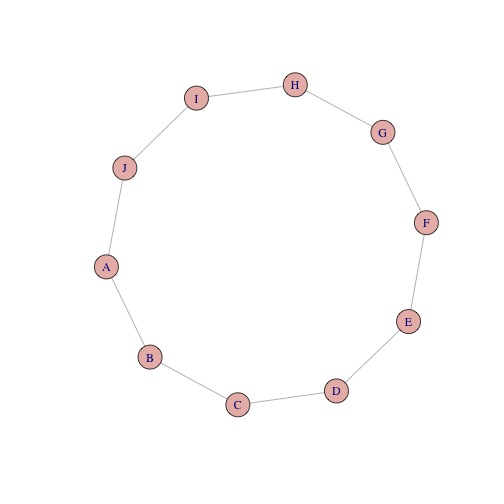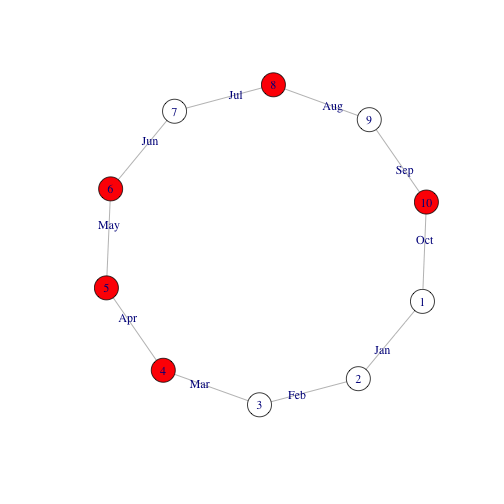# remove all node and edge attributes
vertex.attributes(g) = list()
edge.attributes(g) = list()
# save the layout of the graph in a variable
coords = layout.fruchterman.reingold(g)
coords
## [,1] [,2]
## [1,] 18.953585 -11.825474
## [2,] 15.702967 -13.156875
## [3,] 12.286887 -12.321755
## [4,] 10.017839 -9.634660
## [5,] 9.753675 -6.127501
## [6,] 11.598423 -3.135268
## [7,] 14.852391 -1.803926
## [8,] 18.267861 -2.644340
## [9,] 20.538756 -5.329096
## [10,] 20.802090 -8.834814
# visualization parameters for graph, nodes and edges
plot(g,
layout=coords,
vertex.size = 20, vertex.color = "white", vertex.shape = "square", vertex.label = letters[1:vcount(g)],
edge.width = 2, edge.color = "black", edge.lty = 3, edge.label = LETTERS[1:ecount(g)], edge.curved = T )








